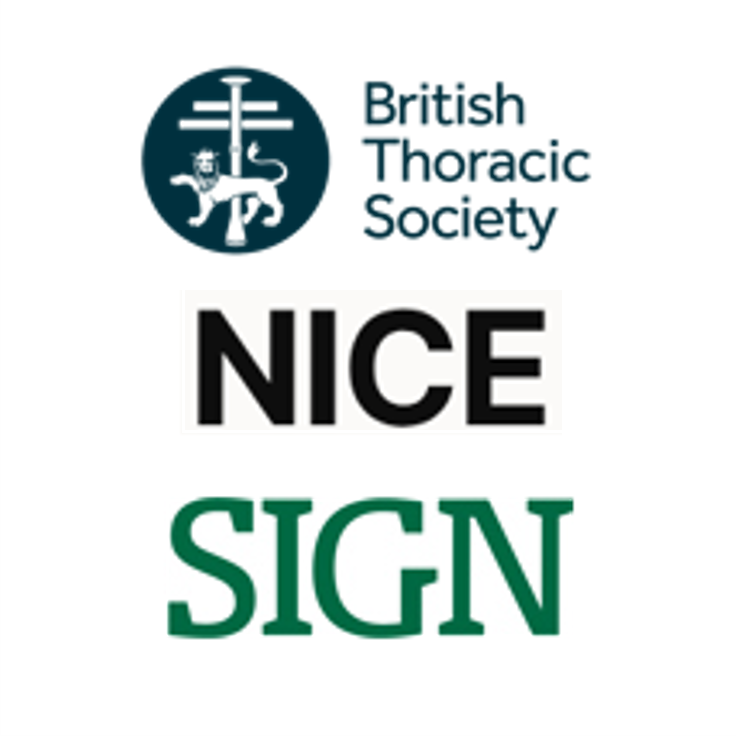Provision of information

This content is from the BTS/SIGN British guideline on the management of asthma (SIGN 158) 2019.
The provision of accurate information to patients and carers is of great importance in order to achieve good adherence to treatment and improved patient outcomes. Specific recommendations and good practice points relating to provision of information by healthcare professionals to patients and carers are found throughout this guideline.
Checklist of information for patients and carers
This section gives examples of the information patients/carers may find helpful at the key stages of the patient journey. The checklist was designed by members of the guideline development group based on their experience and their understanding of the evidence base. In developing the checklist, consideration was given to what patients and carers valued. The checklist is neither exhaustive nor exclusive.
Assessment and diagnosis
- Fully explain symptoms and triggers, giving examples to help. Ask the patient questions to ensure they understand.
- Explain to the patient that diagnosing and managing asthma is not straightforward, and that they might be trying a few different tests and medicines. Explain to the patient that the results of tests or medicine trials may mean more tests and trying different medicines.
- Explain the different tests using clear, concise, jargon-free language. Show the materials that will be used in these tests, for example a spirometer.
- Ensure patients are kept informed about which tests will be performed, when they are likely to be carried out, and what the results mean.
- Explain and show equipment (inhalers and spacers), how it is used, how often the patient should use it, where they will get these from.
- Encourage patients and their families to discuss their questions and concerns during appointments and reviews. This will help patients to get the most from their appointments or reviews.
Ongoing care (monitoring)
- Advise patients and their families of the need to work in partnership with them to allow a holistic approach to managing their asthma.
- Ensure the patient is aware that they do not have to wait until their regular review if they have concerns that they need to discuss with their healthcare professional sooner.
- Encourage people to take a notebook to appointments to allow them to record key information.
- Offer a summary of discussions at the end of every appointment and check the patient’s understanding.
- Ensure appropriate information is given to patients to encourage them to take responsibility for their asthma, for example making sure that they are familiar with personal asthma action plans and filling these in with them if they do not have one.
- Be sensitive to and aware of how culture and beliefs affect a patient’s asthma and lifestyle. For example offer action plans in different language as appropriate.
- Listen carefully to the needs and priorities of patients and carers.
- Explain what happens if the patient reaches a crisis point of an asthma attack.
Medicines (pharmacological management)
- Inform patients of side effects from medication when prescribing and reviewing medication and reassure them that these are normal. Listen to any concerns.
Explain in clear, jargon-free language, any new medicines, and reasons for changing medicines.
Check and optimise inhaler technique.
Non-pharmacological management
- Remain open minded and open to discussing things that may help manage symptoms alongside medicines. Different things might help different people.
Self management
- Ask patients to think about asthma triggers, for example perfumes, cleaning products, smoke, etc.
- Ask patients what they do to help them to manage their asthma, for example do they keep a diary, notebook, use an app, peak-flow meter, etc.
- Provide and explain a personal asthma action plan (PAAP).
Asthma attacks
- Introduce yourself.
- Discuss with the patient their personal asthma action plan before they leave hospital.
- Discuss with the patient and their family or carer what happens after they leave the hospital, for example explain that they need to make an appointment with their doctor or asthma nurse.
Asthma in pregnancy
- Communicate with the labour team to ensure they are aware of any at-risk patients.
- Discuss with the patient any changes to their asthma action plan and make sure the patient understands any changes.
Asthma in young people
- Involve children and young people from the start and encourage them to take responsibility for managing their asthma. Listen to and address their needs fully and ask children and young people the following questions.
- Have you had any asthma attacks? What were you doing at the time?
- Have you been breathless?
- Have you been taking your medication? If not, what were the reasons for this?
Work-related asthma
- Explain that people may find they have issues at work, for example triggers may be present.
- Discuss what can be done to help at work.
![]()
![]()